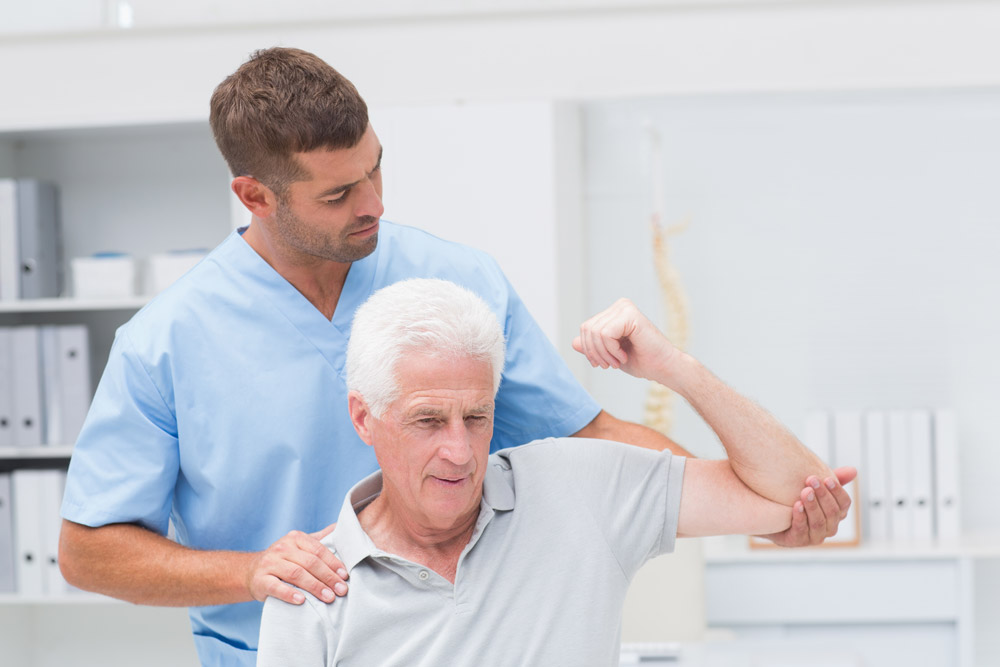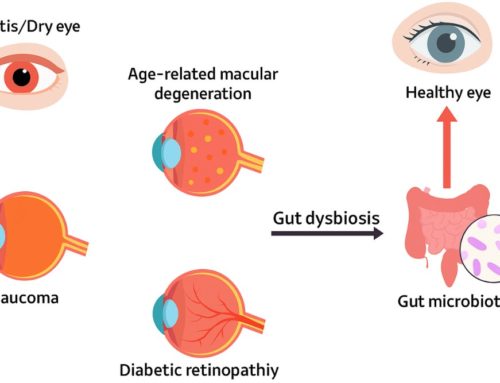Shoulder repairs range from lightly invasive to advanced surgical techniques. However, you’ll need recovery time after shoulder surgery, regardless of the aggressiveness of the procedure. Though pain management and wound care are vital, physical therapy offers benefits that other methods can’t match.
A trained physical therapist guides you through customized movements to improve overall function. Over time, you’ll build strength and regain flexibility and range of motion. With the proper treatment, your shoulder movement may even exceed your expectations. For more information on the benefits of physical therapy, keep reading.

Recovery After Shoulder Surgery – Why Physical Therapy?
After shoulder surgery, you’ll receive instructions on sling use and wound care to protect the area and prevent infection. Medication and cold pack machines may also be recommended to manage pain and swelling.
Although these are useful tools, studies show that rehabilitation involving physical therapy offers the highest benefits after shoulder surgery. It increases recovery speed, shoulder function, and even patient satisfaction during the postoperative period. The following sections discuss the benefits of PT after shoulder surgery.
Restores mobility
Shoulder deterioration from chronic conditions or injury prevents smooth and comfortable function. After shoulder surgery to repair the damage, physical therapy improves mobility recovery. In fact, studies show that performing passive- and active assisted exercises post-surgery improves shoulder range of motion and function.
These results were similar in those with minor and major surgeries. The sooner you begin these exercises, the better the results, as long as they are done safely and correctly. Trained professionals guide you through the stages of rehab, with gentle progressions to improve movement and prevent injury.
Rebuilds strength
An injured or damaged shoulder prevents you from using it as you should. Over time, the muscles deteriorate and weaken. Even after shoulder surgery, those muscles don’t immediately recover without effort.
Physical therapy programs feature a range of exercises to rebuild lost strength. These activities work the muscles surrounding the shoulder joint, increasing joint support. The more motivated you are with the program, the more muscle mass you’ll produce and the stronger you’ll become. Healthy muscles also prevent injury, so you’re less likely to require future surgical procedures.
Reduces pain and swelling
Even minor surgery is invasive, requiring incisions or punctures that damage tissue and nerves. Pain and inflammation are often adverse effects of such intended injuries and persist through recovery after shoulder surgery. Though medications often help manage these issues, they don’t work for everyone and may cause uncomfortable side effects.
The gentle stretches and exercises used in physical therapy improve circulation and reduce swelling. Decreased inflammation, combined with the release of endorphins during exercise, also naturally relieves pain. Maintaining a routine without overexerting yourself prevents the return of such discomfort.
Prevents long-term stiffness
According to experts, some stiffness is common after shoulder surgery. During the first stage of recovery, a sling is used to immobilize the joint to prevent injury. Without movement, stiffness occurs. Even after the initial prone period, concerns of further damage may prevent you from moving the joint.
Long-term stiffness from lack of movement hinders recovery, reducing function even after the joint has healed. Physical therapy helps you avoid these consequences. The exercise program safely works the shoulder and arm. As you regain motion in each area, stiffness eases, allowing increased range of motion over time.
Resources:
- WashU Medicine, Postoperative Care
https://www.ortho.wustl.edu/content/Patient-Care/3131/Services/Shoulder-Elbow/Overview/Shoulder-Arthroscopy-Information/Postoperative-care.aspx - PMC, June 9, 2023, Factors influencing physical therapy utilization after shoulder surgery: a retrospective review
https://pmc.ncbi.nlm.nih.gov/articles/PMC10625012/ - PMC, Nov. 25, 2018, Effectiveness of formal physical therapy following total shoulder arthroplasty
https://pmc.ncbi.nlm.nih.gov/articles/PMC7153202/ - OrthoInfo, Rotator Cuff and Shoulder Conditioning Program
https://orthoinfo.aaos.org/globalassets/pdfs/2017-rehab_shoulder.pdf - Integris Health, Dec. 17, 2024, How Physical Therapy Improves Outcomes After Surgery
https://integrishealth.org/resources/on-your-health/2024/december/how-physical-therapy-improves-outcomes-after-surgery - Johns Hopkins Medicine, Failed Rotator Cuff Repairs
https://www.hopkinsmedicine.org/health/treatment-tests-and-therapies/failed-rotator-cuff-repairs
This content comprises informative and educational resources only and can not be considered as a substitute for professional health or medical guidance. Reliance on any information provided in this article is solely at your own risk. If you have any inquiries or apprehensions about your medical condition or health goals, talk with a licensed physician or healthcare provider.






Leave A Comment